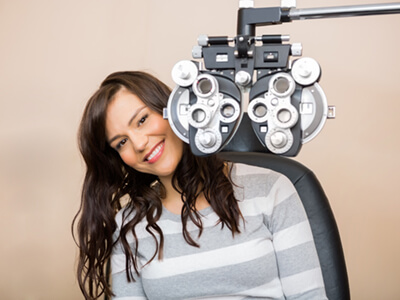General Eye Exams

The American Academy of Ophthalmology recommends that adults with no signs or risk factors for eye disease get a baseline eye disease screening at age 40 — the time when early signs of disease and changes in vision may start to occur. Your eye doctor will recommend appropriate intervals for follow-up exams. If you have an eye disease or if you have a risk factor for developing one, such as diabetes, high blood pressure or a family history of eye disease, you should see an eye doctor even if you are younger than 40.
A comprehensive eye exam will include a review of your medical history and family history. Your visual acuity, pupils, side vision, eye movements, and eye pressure will be evaluated. You may have a refraction (test to measure for corrective lenses) and may be given a prescription for eyeglasses or contact lenses if necessary. A microscope called a slit lamp will be used to examine the front part of your eye in detail. You will have eye drops to dilate (or widen) your pupils. This allows your eye doctor to thoroughly examine your optic nerve and retina in the back of the eye for signs of damage from disease. You may be light sensitive and have some blurred vision for reading for 4-6 hours following this examination.
Your eye doctor may suggest further testing based on the results of your examination. These may include OCT, topography, fundus photos, visual field testing or other techniques.



